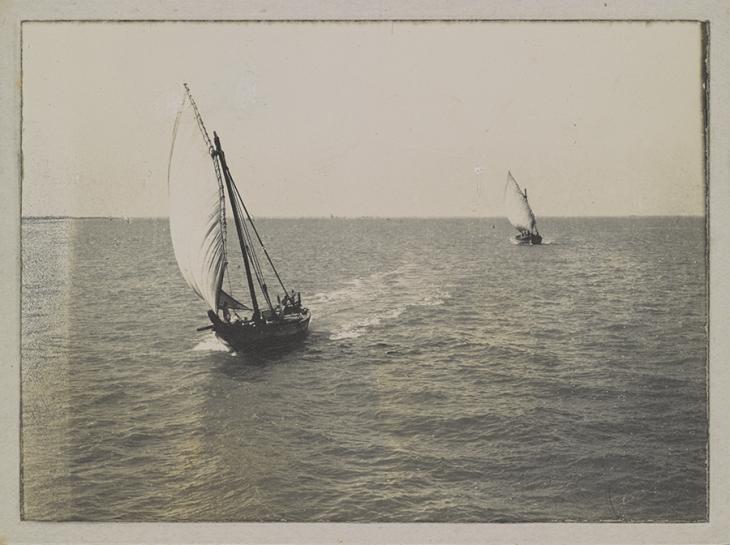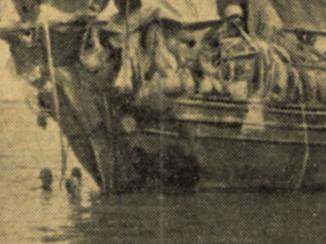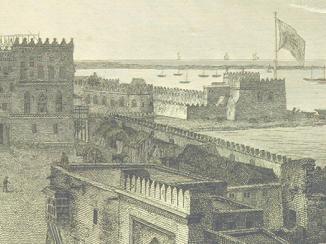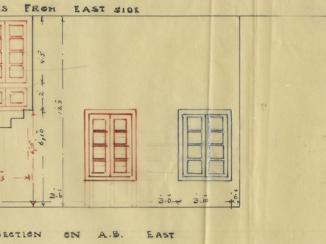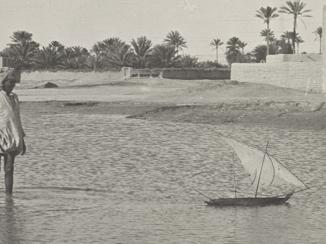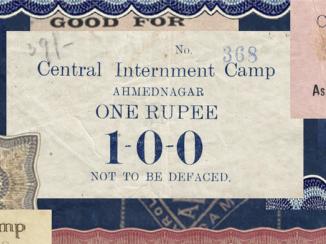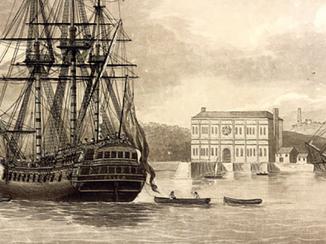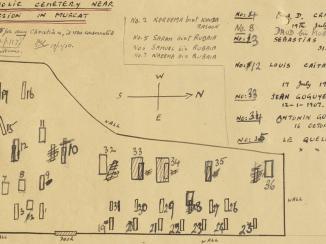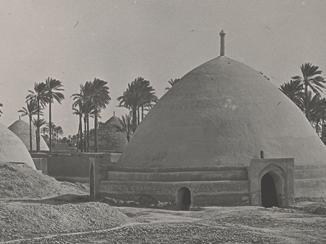Overview
Where, how, and why nautical vocabulary appears
Ships and vessels are central to the life of people in the Gulf, and British records frequently mention them. They appear in many different types of records. Ship logs, such as the IOR/L/MAR Series, were written on board East India Company ships, which traded with India and the Gulf, and include nautical vocabulary when describing the events of their voyages.
Letters from British officials stationed at ports often mention the movements of British ships in the Gulf. They describe incidents involving local trading and pearling ships, such as shipwrecks, occasions where ships had been attacked, and when ships were suspected of carrying enslaved people. They also include petitions from owners of ships or cargoes, as well as nakhudas, and testimony from crew and passengers.
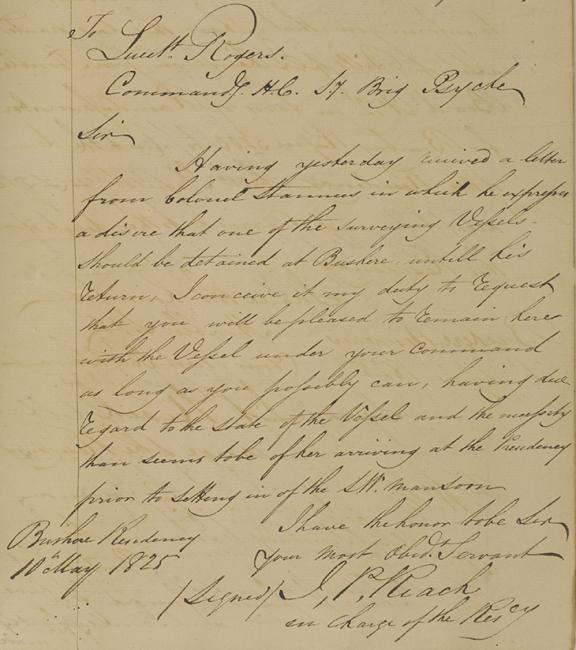
Administrative reports on countries often include sections mentioning ships, particularly those concerned with the pearling industry.
Parts of a ship
Bow: The front section of a vessel.
Castle: A built up raised section of the ship, often used to house lookouts or fighting men, which could be located at the stern, the bow, or in the middle of the ship. The structure can also include cabins within it.
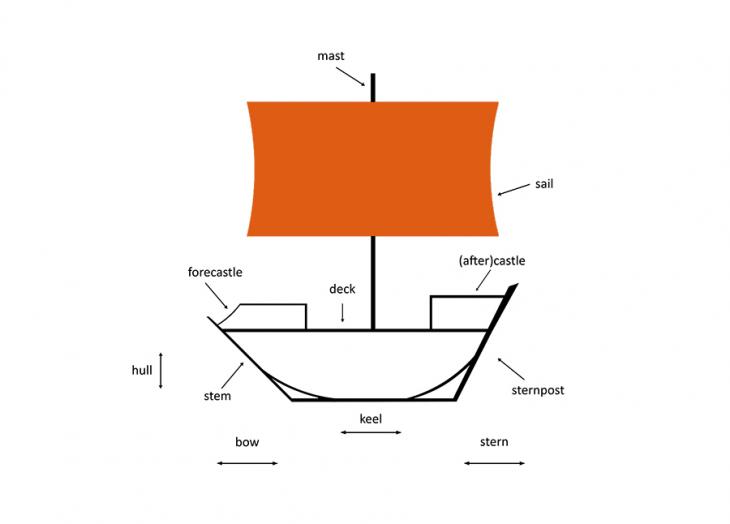
Deck: The flat top of a ship, or any structures on the main deck that create horizontal surfaces.
Hull: The body of the ship, which may be topped with a deck.
Keel: The lengthwise wooden support at the base of a ship, stretching from the stem to the sternpost, supporting the frame of the ship.
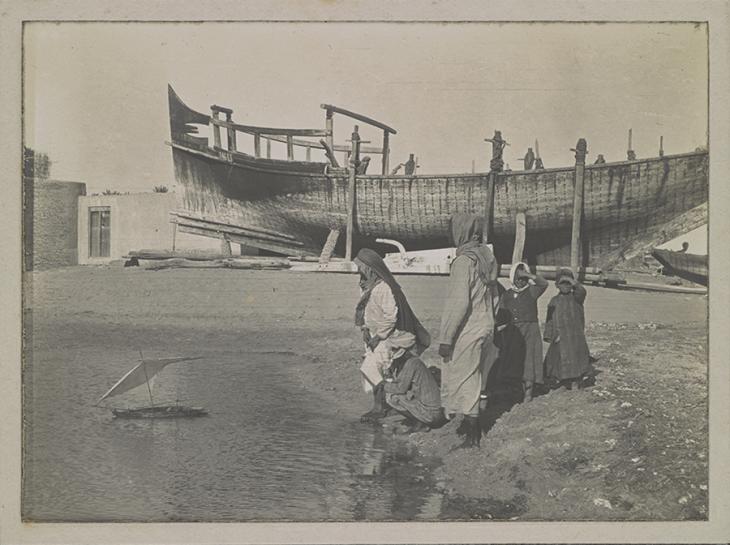
Mast: A vertical pole secured to the deck, which supports one or more sails. Ships may have more than one mast.
Sail: A piece of canvas or a similar material, which is designed to catch the wind and thereby propel the ship forward. Sails are usually rectangular or triangular.
Stem: The most forward part of the bow, an extension of the keel, slanting upwards.
Stern: The rear section of a vessel. The shape of the stern could be square, circular, or elliptical when seen from behind.
Sternpost: The upright post at the rear of a vessel, which may be slanted outwards slightly.
Quarter-galleries: Projections on either side of the stern. Often highly ornamented, they could also be used as a firing platform on some ships.
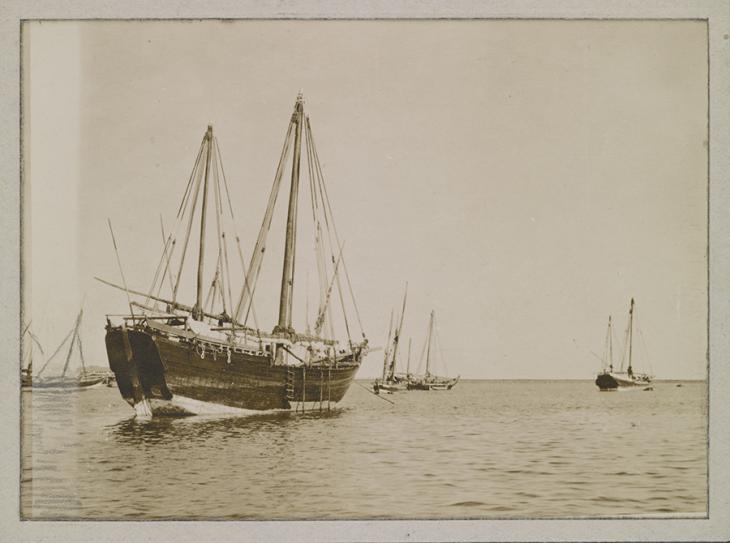
Types of sail
One of the main ways to classify types of sailing vessel is by their sailing rig (configuration of sails and masts). Different rigs may have advantages depending on where the vessel is sailing, the number of crew, and the purpose of the ship. The many types of sailing rigs, according to European classifications, include:
Fore-and-aft: With sails running parallel to the keel of the boat. This rig is manoeuvrable and most efficient for sailing where winds are variable, such as in the Gulf and the Mediterranean.
Square-rigged: With sails running perpendicular to the keel of the boat. This rig is most efficient for sailing with a following wind (a wind behind the vessel), and is therefore often used on ocean-going ships.
Lateen: Fore-and-aft triangular sail, set on a yard (solid spar) at the top of the sail, which is at an angle to the mast. These sails could be more efficient than square sails, but could also be cumbersome to handle on larger ships.
Settee: A lateen sail with the front corner cut off, and therefore with a shorter mast. Many dhows use settee sails because they are easier to handle.
Gaff-rigged: A configuration where a four-cornered sail is rigged fore-and-aft, allowing a vessel to carry more sail than if it used lateen sails.
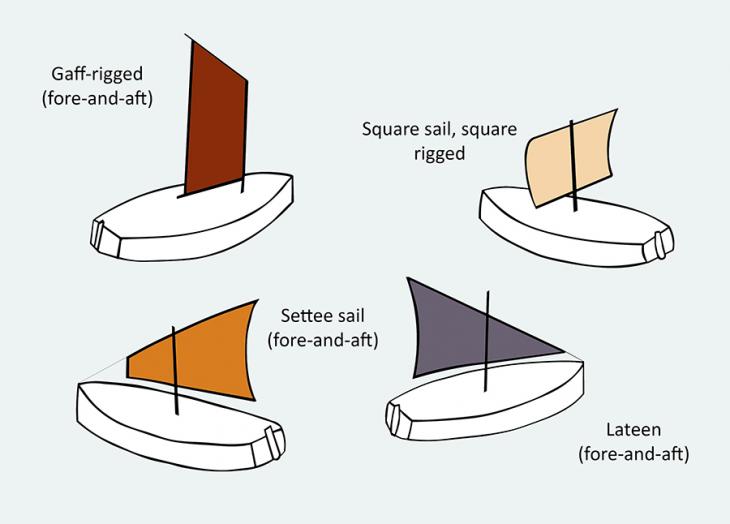
Other nautical terms
Bill of lading A document confirming the goods which a ship has received. : A document issued by a person undertaking to transport a cargo, often a ship's master, to the person consigning the cargo. This document acts as a receipt, and confirms that the goods will be delivered.
Bower: A term for an anchor carried in the bow of the ship.
Cable length: A unit of measurement approximately 100 fathoms (varying from around 169 to 215 metres). The unit is named after the length of a ship’s anchor cable.
Clinker-built: Built from planks, with the lower edge of the upper plank overlapping the upper edge of the one below.
Fathom: A unit of measurement which varied from 5 to 7 feet (1.5 to 2.1 metres).
Knots: A unit of speed of one nautical mile per hour, roughly equivalent to 1.15 miles or 1.85 kilometres per hour.
League: A unit of measurement usually defined as three miles (4.8 kilometres) on land, and at sea, usually equal to three nautical miles (5.56 kilometres).
Manifest: A list of the cargo or passengers on board a vessel. It is similar to a bill of lading A document confirming the goods which a ship has received. , and can be used for insurance purposes if the cargo is lost.
Road/Roadstead: Area of sheltered water near the shore where it is safe for ships to anchor. Ships might anchor in the roadstead, while transferring cargo to the shore, taking on provisions, or waiting for a favourable wind.
Soundings Measurements of the depth of a body of water. : Measurements of the depth of a body of water, traditionally taken using a sounding line. Soundings Measurements of the depth of a body of water. are sometimes written on charts to aid navigation in shallow water.
Variation (nautical measurement): Also known as declination, the difference between ‘true north’ (the geographic North Pole) and ‘magnetic north’ (as shown on a compass). This is measured in degrees and minutes east and west, and varies by location and over time.
Weigh (to weigh anchor): To haul up the anchor, preparatory to a ship sailing.
